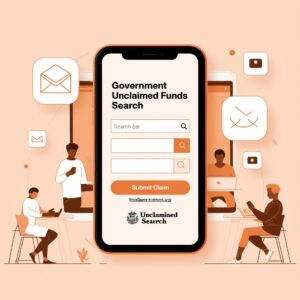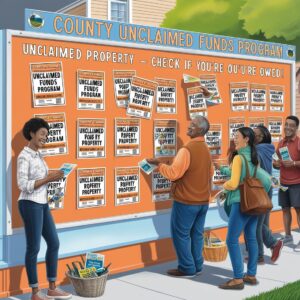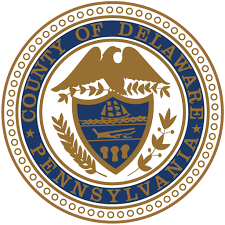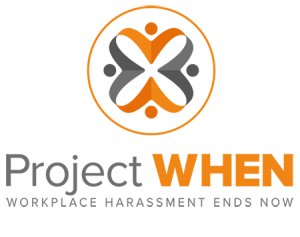Reuniting Residents with Lost Assets: A Case Study of Delaware County, PA’s Unclaimed Funds Public Awareness Campaign
 Unclaimed property represents a substantial yet often overlooked public resource. Across the United States, local governments regularly hold funds that belong to residents, businesses, or institutions—often unclaimed due to outdated contact information, uncashed checks, or administrative errors. Delaware County, Pennsylvania, took decisive and transparent action to address this issue by launching a proactive public awareness campaign focused on reuniting residents with these assets.
Unclaimed property represents a substantial yet often overlooked public resource. Across the United States, local governments regularly hold funds that belong to residents, businesses, or institutions—often unclaimed due to outdated contact information, uncashed checks, or administrative errors. Delaware County, Pennsylvania, took decisive and transparent action to address this issue by launching a proactive public awareness campaign focused on reuniting residents with these assets.
In July 2020, the Delaware County Controller’s Office created a publicly accessible online database of unclaimed funds, coupled with a multilingual, county-wide outreach effort to inform and assist residents. This case study details the structure, strategy, execution, and impact of the campaign, underscoring how targeted communication and digital tools can enhance transparency and deliver tangible financial benefits to the public.
The Initiative: Delaware County’s Unclaimed Funds Campaign
Background and Objectives
Under the leadership of Controller Joanne Phillips, Delaware County’s initiative aimed to ensure that funds owed to residents and businesses were returned efficiently and equitably. These funds, totaling over $113,000 at the time of launch, originated from payments issued by the county (e.g., vendor checks, refunds, property rentals) that were never cashed or were returned as undeliverable.
The goals of the campaign were clear:
- Promote transparency and accountability in public financial operations.
- Enable residents and organizations to reclaim funds rightfully theirs.
- Enhance public trust in county government during a period of financial uncertainty, heightened by the COVID-19 pandemic.
- Provide a no-cost, easy-to-access process for submitting claims.
Development and Launch of the Unclaimed Funds Database
The cornerstone of the campaign was the launch of a searchable Unclaimed Funds page on the Delaware County website. The database listed more than 750 outstanding payments, with individual amounts ranging from a few dollars to nearly $8,000.
Key features of the platform included:
- A downloadable Excel spreadsheet sorted by payee name.
- Details of the payment amount and year issued.
- Easy navigation and instructions for locating and identifying one’s name or business.
The site also included a claim form and detailed submission guidelines, helping to streamline the return process.
Public Communication and Outreach Strategy
Recognizing the importance of public awareness in the success of the initiative, the Controller’s Office implemented a multifaceted outreach campaign:
- Press Releases and Media Coverage
- The launch was accompanied by a county-wide press release distributed to local newspapers, online news outlets, and radio stations.
- Controller Phillips gave interviews explaining the purpose of the program and its value to residents.
- Website and Email Communication
- The County Controller’s official website served as the primary platform for accessing the database and claim forms.
- Partner agencies and departments were encouraged to share the announcement via newsletters and mailing lists.
- Social Media
- Announcements and reminders were posted on county-operated social media accounts, including Facebook and Twitter.
- Posts were optimized for mobile access and included direct links to the unclaimed funds page.
- Direct Outreach
- Residents who had recent interactions with the county—such as those who had submitted vendor applications or rental agreements—were directly contacted where possible.
- Local community groups, nonprofits, and senior centers were encouraged to help spread the word to digitally underserved populations.
Claim Submission Process
To promote ease of access, the county offered a simplified claim process that did not require legal assistance or third-party services. Claimants were required to:
- Download and complete a standard claim form.
- Provide valid government-issued photo identification.
- Submit proof of connection to the listed name/address (e.g., utility bill, business license).
- Mail the claim package to the Controller’s Office.
The process was designed to be accessible, secure, and cost-free.
Equity and Accessibility Considerations
Delaware County made deliberate efforts to ensure that the campaign reached vulnerable or historically underserved populations. These included:
- Plain-language instructions and FAQs to support users of all literacy levels.
- Efforts to reach senior citizens and renters—demographics more likely to have moved or forgotten about payments.
- Ensuring the online materials were mobile-compatible, given the high percentage of users accessing information via smartphones.
Outcomes and Impact
The campaign delivered several measurable and qualitative benefits:
- Increased Claims and Recovered Funds: Many individuals and organizations were able to recover funds ranging from under $10 to several thousand dollars.
- Public Engagement: The unclaimed funds page received thousands of unique views in the first few weeks.
- Positive Media Attention: The initiative garnered favorable press coverage, highlighting Delaware County’s transparency and citizen-focused governance.
- Improved Trust: Anecdotal feedback from claimants expressed appreciation for the transparency and ease of the process.
 Challenges and Lessons Learned
Challenges and Lessons Learned
While the campaign was successful, it also revealed areas for future improvement:
- Claim Volume Management: An unexpected number of claims required temporary reallocation of staff time.
- Awareness Plateau: After the initial media wave, awareness tapered off. Plans were made to periodically re-promote the program.
- Language Accessibility: While plain-language instructions were provided, the site and claim form were not initially available in multiple languages, limiting reach.
Sustainability and Future Planning
The Unclaimed Funds initiative laid the groundwork for ongoing transparency efforts:
- The online database is updated regularly.
- Annual reminders will be issued to residents about the availability of unclaimed funds.
- Potential integration with GIS or interactive search tools is under consideration for the next phase.
Conclusion
Delaware County’s Unclaimed Funds Awareness Campaign exemplifies the power of proactive communication, digital accessibility, and a community-first approach to government transparency. By combining simple technology with a strong outreach strategy, the Controller’s Office returned thousands of dollars to the community—strengthening trust and delivering financial relief at a critical time.
This case study offers a replicable model for other counties seeking to launch similar programs. Transparent, equitable, and results-driven, Delaware County’s approach demonstrates that even small financial recoveries can have a big impact when citizens are engaged, informed, and empowered.
Ready to Elevate Your Agency’s Public Communication?
We understand the unique challenges state and local government agencies face—from complex issues to diverse community needs. Our comprehensive approach can help you transform the way you connect with constituents, improve transparency, and highlight the valuable work your agency does every day.
Interested in learning more? Reach out to us today for a consultation. We’d love to discuss how our services can support your goals and help you build lasting trust with the communities you serve.




